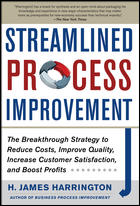
The NDT and quality inspection industry has long been comprised of two classes of workers: employees and contractors. For the most part, the distinction is pretty clear. Employees are on the payroll (either full-time or part-time) of a company, which provides benefits, pays payroll taxes, withholds income and social security taxes.
Contractors, on the other hand, are hired on a limited-time basis, usually for a matter of a few weeks to a few months, with no permanent attachment to the company. They are responsible for their own taxes and benefits.
While this dichotomy may be apparent to everybody within the industry, it is not quite so cut-and-dried to the Internal Revenue Service (IRS) and state tax authorities. With tax revenues down, officials are seeking every avenue to uncover new sources of revenue, and to plug gaps and loopholes in tax laws.
One of the targeted areas is employee classification. The IRS and departments of revenue in several states have stepped up enforcement of the definition of employee vs. independent contractor. Misclassified workers can cost employers in the form of penalties, interest and back taxes.
Using independent contractors to supplement a company’s workforce is a common practice, adding manpower without adding permanently to the staff. There are financial advantages to using independent contractors, including no benefit costs, and no payroll or social security taxes.
However, independent contractors often act as part of a company’s workforce, utilizing office space, materials and resources as if they were employees. Now, the IRS may view that as fact.
The primary basis for defining an independent contractor is control-control of the method of work, what is worked on and the criteria under which the work is performed. If control belongs to the employer, the worker is likely to be classified as an employee. Ask yourself these questions, which come directly from the IRS Web site:
If you answer yes to any of these questions, tax authorities may see your independent contractor as an employee. In addition, the company will be responsible for paying all back taxes from the inception of employment, along with potential fines and penalties.
Obviously, the focus by the IRS and state tax departments on the independent contractor system makes it more important than ever to make sure you are properly classifying individuals working for or with you. Treating workers as independent contractors for payroll tax purposes is no longer enough to prove their independent status.

